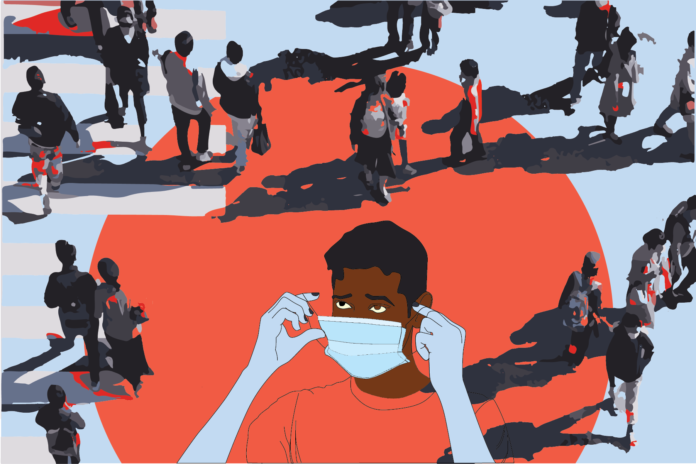According to a recent study published by researchers at the University of Waterloo (U of W), people with social anxiety may become more stressed as mask-wearing becomes a personal choice in a post-pandemic era.
The study was co-authored by David Moscovitch, a professor of clinical psychology at U of W and Sidney Saint, a fourth-year psychology student at U of W. Their work is planned to be published in the international journal Anxiety, Stress, & Coping.
“We’ve studied social anxiety for many years, but it became very clear that the pandemic represented a unique context that we expected would have certain impacts on people struggling with social anxiety prior to the pandemic,” Moscovitch said.
As an exploratory review, this paper is a combination of existing literature and past research from the databases APA PsycNet and PubMed between September and November 2020.
Social anxiety is characterized by negative self-perception and a fear of negative evaluation. Social Anxiety Disorder (SAD), an extreme manifestation of social anxiety, is the most commonly experienced anxiety disorder. According to Anxiety Canada, SAD is estimated to affect up to 13 per cent of Canadians.
The review focused on three features of social anxiety: hypersensitivity to social norms, biases in the detection of facial cues and the propensity for self-concealment.
“Some people feel that mask-wearing provides them with a sense of comfort during the pandemic, not just to prevent contagion, but to hide aspects of their appearance or signs of anxiety that they think other people might judge negatively,” Moscovitch said.
According to Moscovitch, this is known as a “safety behaviour,” meaning that mask-wearing has become a coping strategy during moments of social anxiety, creating distance between the mask wearer and the people they are interacting with.
“There might be some people who feel discomfort as the world shifts away from having to wear masks for health and safety reasons, especially if they feel more comfortable with their face being partially concealed with the mask,” Saint said.
The paper also found that face masks make the interpretation of facial expressions, social cues and emotional states difficult for people struggling with social anxiety.
“When there’s uncertainty or ambiguity in a social situation, people who struggle with social anxiety tend to fill in the blanks with negative interpretations of what people are thinking or feeling,” Moscovitch said.
“Rather than seeing other people as friendly, they are more likely to see them as being critical. That distorted perception is really the heart of the problem,” he said.
However, a similar study, co-authored by Jolie Ho, a U of W graduate student in clinical psychology who works in Moscovitch’s lab, contradicts the perception that socially anxious people would further isolate themselves during the pandemic.
Ho said within her study, people with high levels of social anxiety, especially those who experienced COVID-19 stressors such as sickness or unemployment, “were reporting the highest levels of affiliation, reaching out to others or wanting to engage with others.”
Despite the eagerness to socialize, Ho said socially anxious people continued to experience high levels of loneliness, a fear of negative evaluation by others and high levels of coronavirus anxiety.
Moscovitch’s recommendation to those who are socially anxious is to develop strategies for themselves that will ease their uncomfortability and help them avoid social interactions.
“What people will discover in doing this is that the vast majority of us are very happy to return their smiles and their eye contact and make that connection after spending all this time feeling disconnected from others,” Moscovitch said.
Featured graphic by Sierra McLean.






